The Spin Bowls
July 30,2019
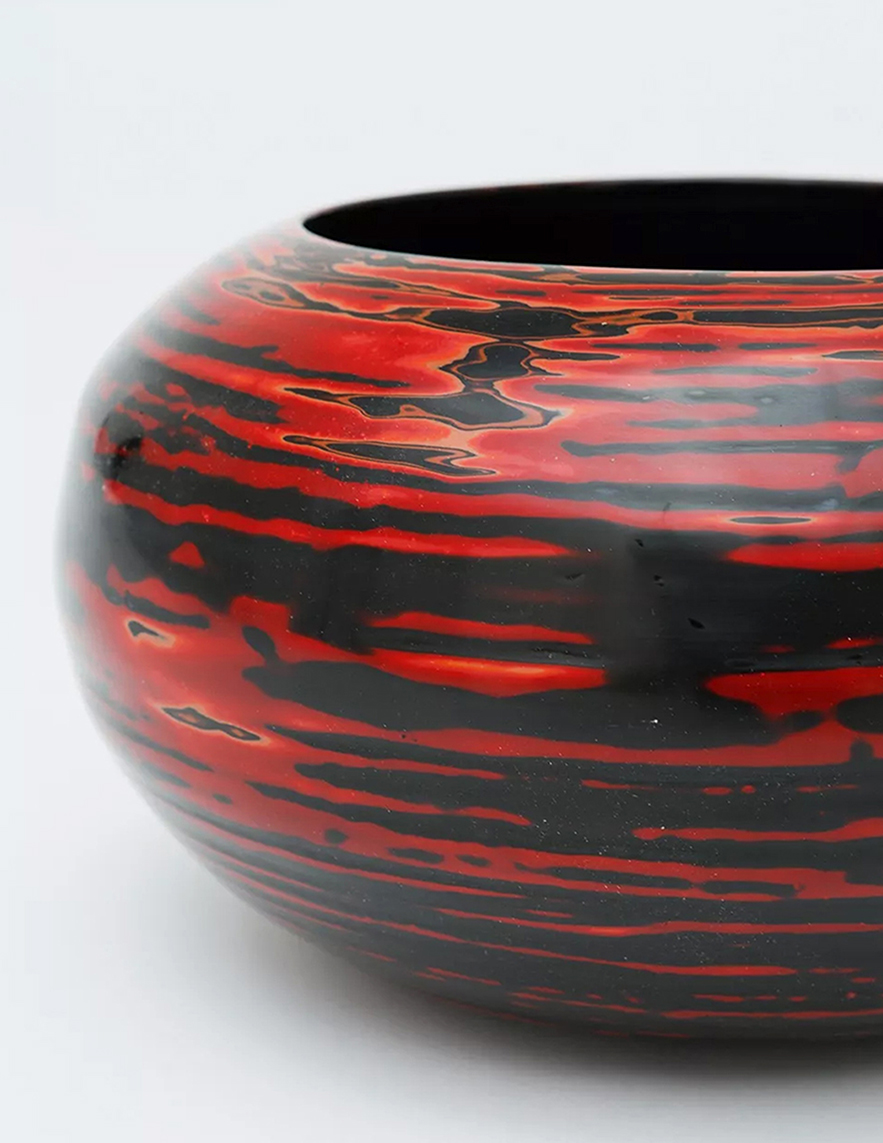
Spin Bowl
The Spin Bowls are our latest lacquerware creation. Simple yet complex; terraces of linear lines create arounded form onto which numerous layers of lacquer are applied. Hand-sanding slowly reveals the different colours in beautiful complex depth, each bowl with its own character and palette.

Shimmer of lacquer on the Spin Bowls
On this blog we have often discussed the beauty of lacquer, its methods and traditions and its history as an important decorative material of Asia. Lacquer can be seen as embodying the essence of Alexander Lamont’s creation. The layers of lacquer are deposits of thoughts and energy exuded by the designer and artisans. Luxury is a pause of reflection on the intimate soul of objects. With this in mind, we would like to invite you to appreciate the physical aesthetic of lacquer through the Spin Bowls. Although our artistic expression in lacquer offers a vast range, this newly launched product is the topic of today.
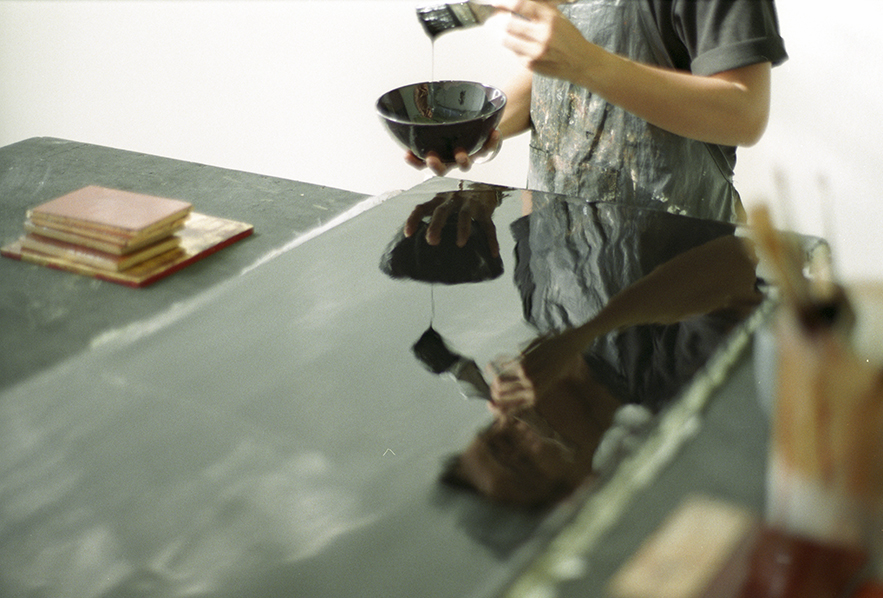
An artisan applying lacquer
The Spin Bowls are made from bamboo. After harvest, the bamboo is soaked in water for a few weeks to clear up its cellulose and become rot-proof. Then it is dried, cracked into strips, and wound around a ring, creating a reel of bamboo. The edges of the bamboo form the continuous horizontal lines that create texture for the lacquer. This ancient technique has been practiced in a large area of Asia due to the abundance of bamboo.
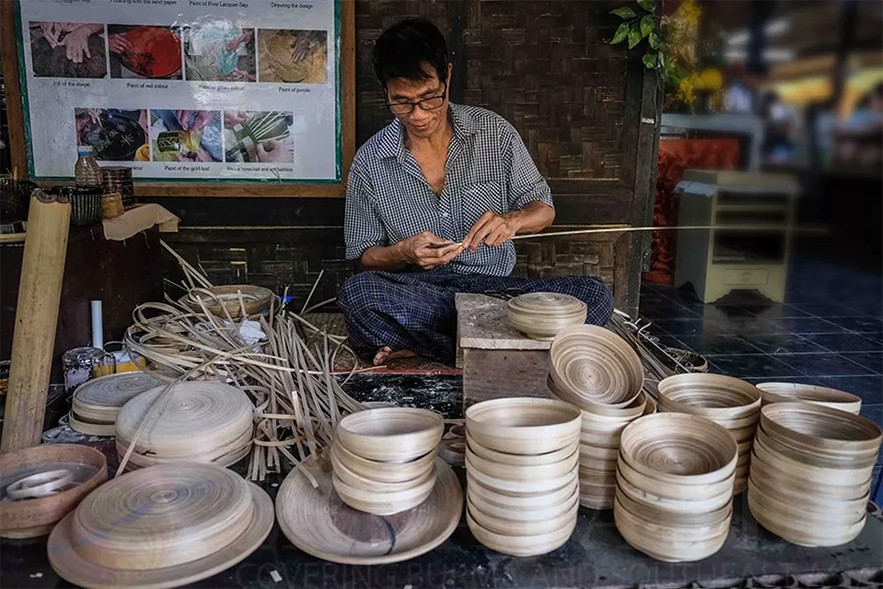
An artisan coiling bamboo stripes
The Han Cocoon jar is Alex’s inspiration source for the form of the Spin Bowls. We do not try to re-invent the form at Alexander Lamont. As materials are at the core of our creation, we strive to exude their beauty to the fullest by giving them simple forms, for which nature or antique objects play important roles to inspire Alex.
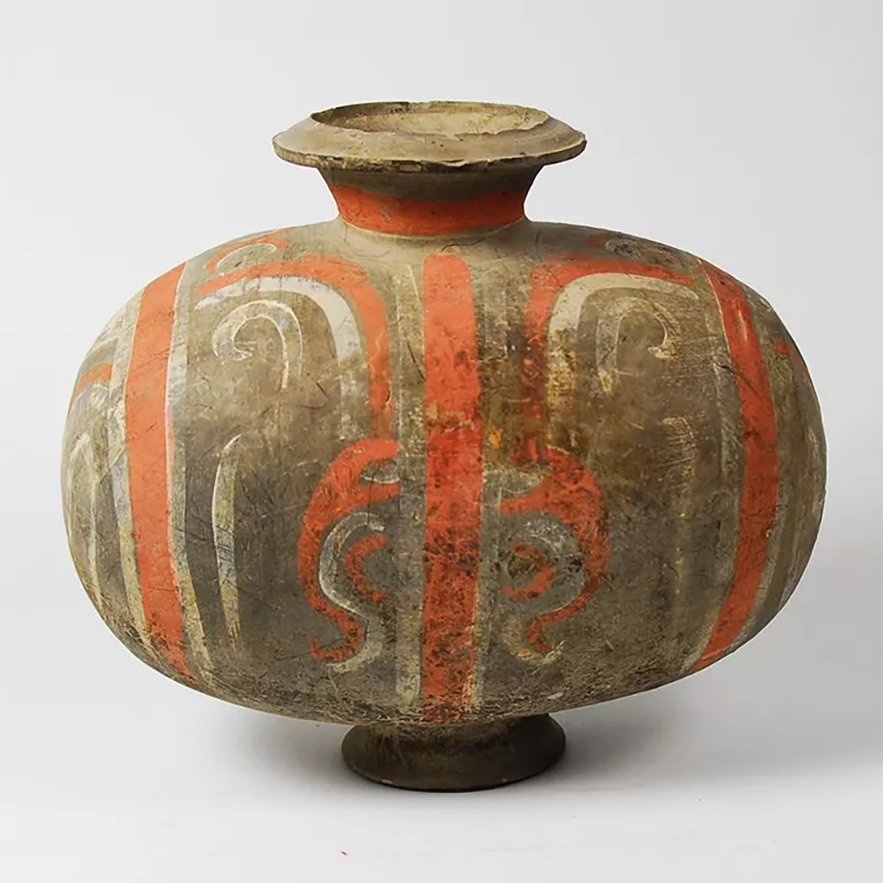
Han Dynasty Cocoon Jar
Colours are rich and saturated natural tones. Lacquer is the most “painterly” technique of Alexander Lamont, and allows us much wider use of colour than other techniques. The inter-play of colour creates a carpet-like shimmer. We avoid colours of any synthetic feeling and stick to saffron, beige, and various tones of reds, greens, blues and black. Alex chose a palette of colours using Japanese pigments that are added to the lacquer. The intriguing patterns are created by exposing the buried layers through sanding and polishing. The uniqueness of colours and patterns on each piece is enhanced by the artisan who produces them.
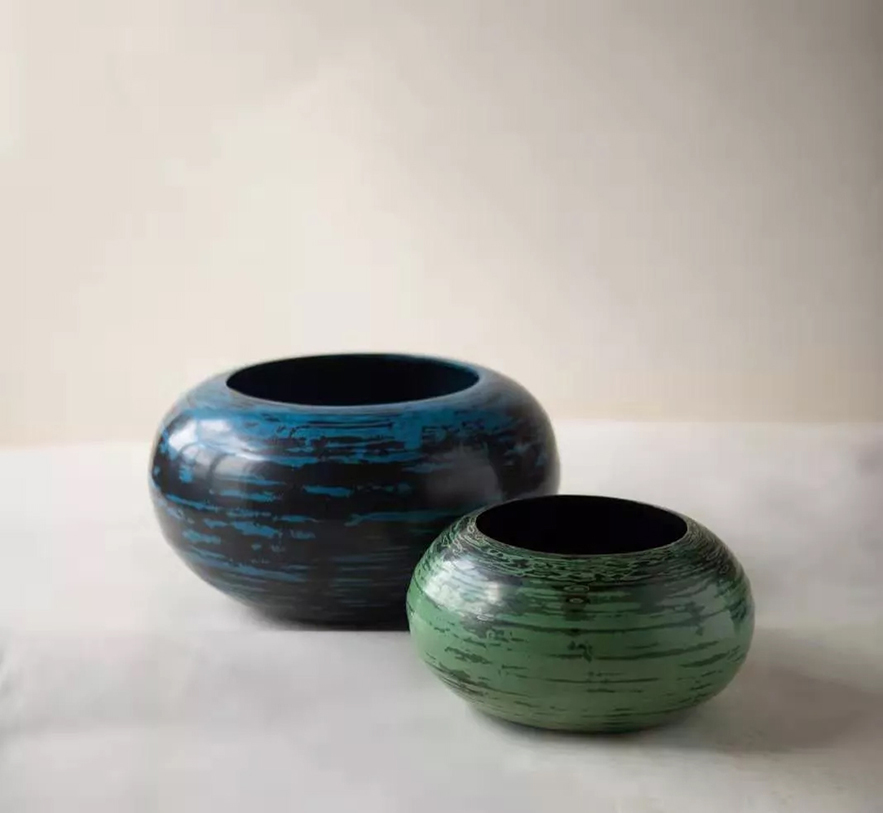
Spin Bowls in blue and green.
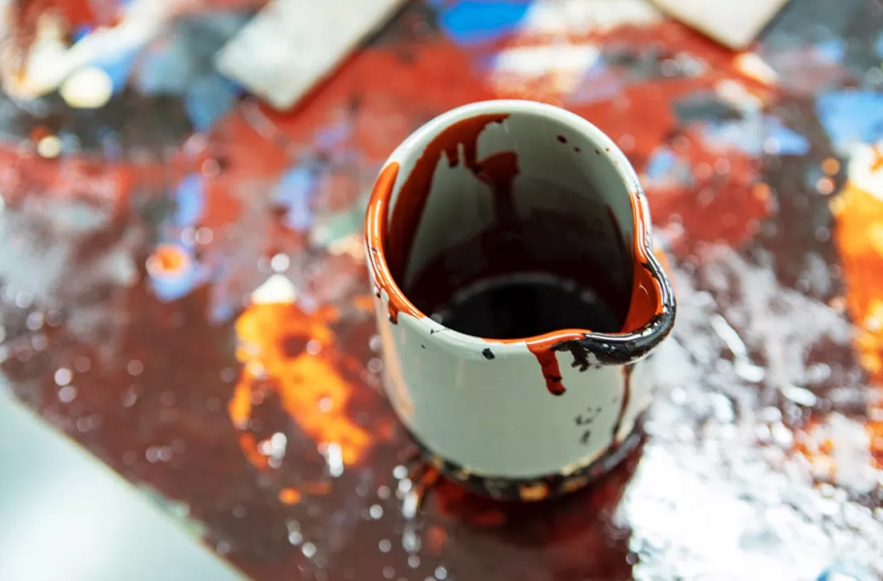
Lacquer mixed with Japanese pigments.
Along with bamboo, lacquer has also been traditionally embraced in a large area of Asia. 漆(qī) is the Chinese character for lacquer. When the character was invented in ancient times, the primary purpose of this tree had already been seen as the liquid it produces, as indicated by the water radical. The right part symbolizes cutting of the tree to collect the sap. Although this character means coating materials in general in modern Chinese, 漆(urushi) today still strictly refers to lacquer in Japanese.

The structure of 漆, the Chinese character for lacquer
The English word “lacquer” originates from the Sanskrit word laksha (लक्ष) meaning “wax”, which was used to describe both the “lac” insects and the scarlet resinous secretion “shellac” produced by them. Shellac was used as wood finish in ancient India and neighbouring areas.
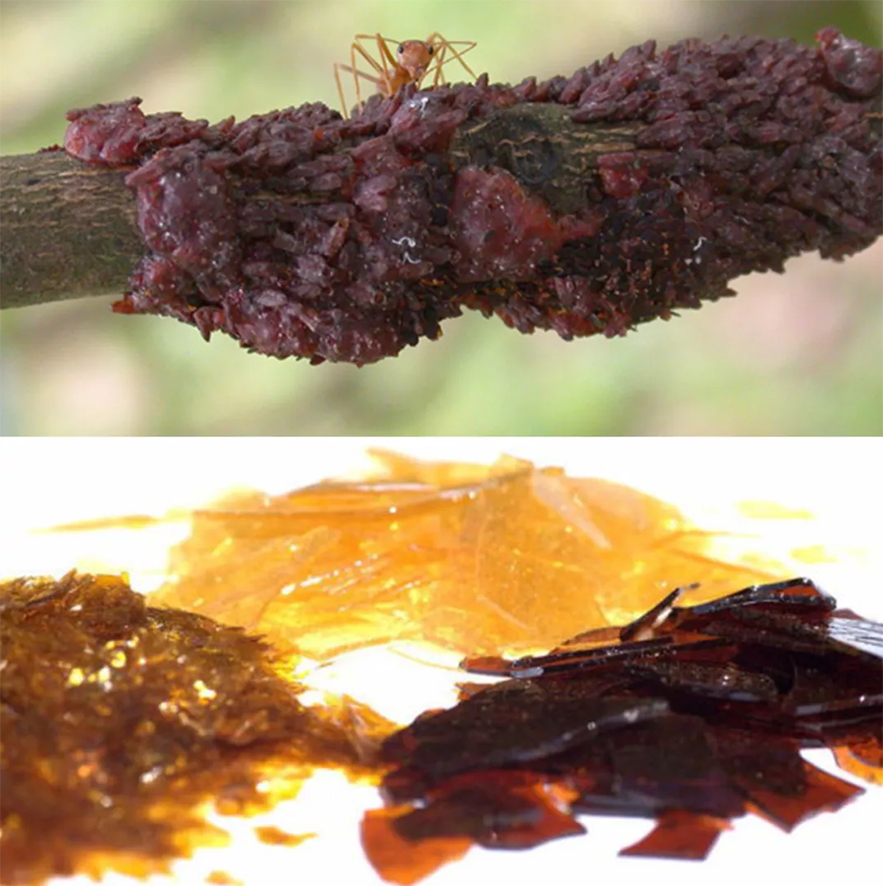
A lac insect and Shellac flakes.
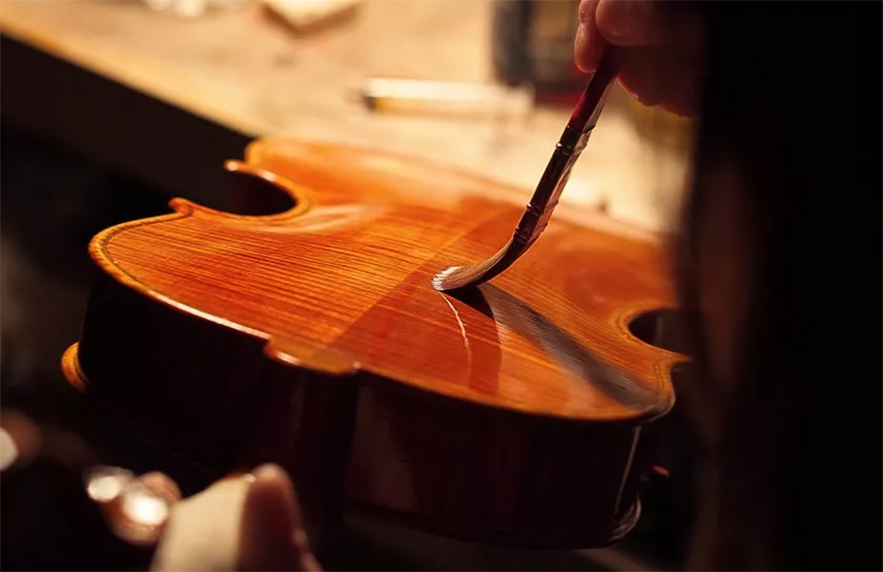
Shellac finish on a violin.
The spin bowls are functional sculptures that are at once ancient and contemporary, decorative and intriguing. These can be used for storing objects or arranging flowers, but you can also simply admire its pure form and wonderful surface, catching and holding the light in your home. The spin bowls are exclusively available at the Alexander Lamont flagship shop in Bangkok.

Spin Bowls being arranged in the Flagship store by a stylist.
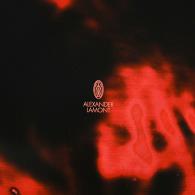
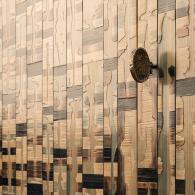
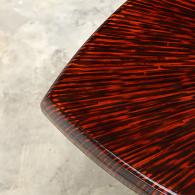
Add new comment